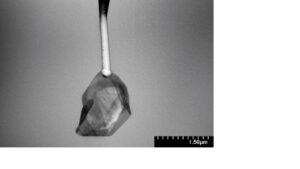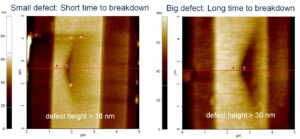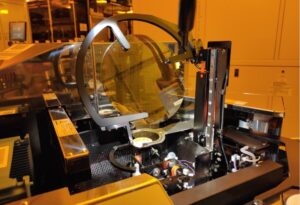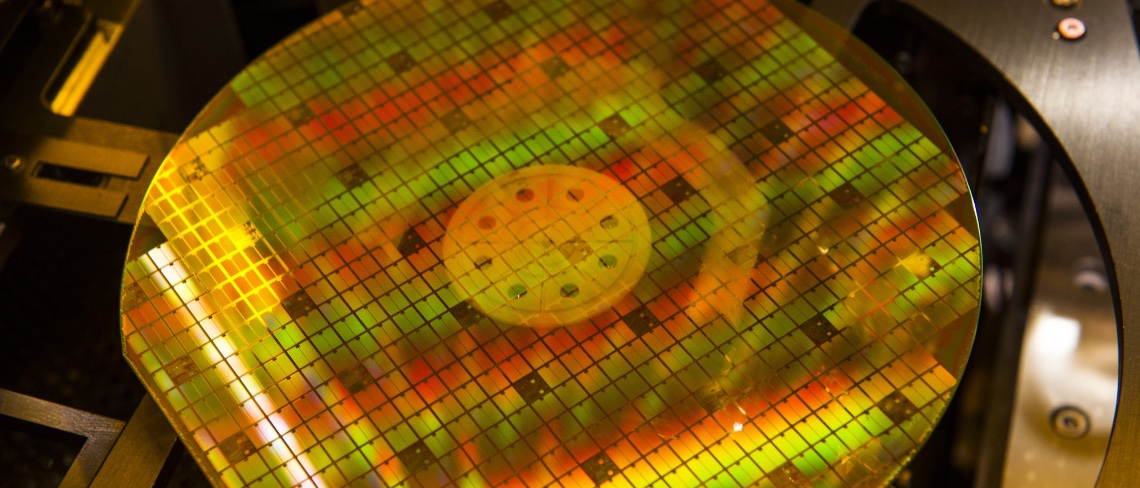
What did it take to win the IRPS (IEEE International Reliability Physics Symposium) 2021 best paper award? Hundreds of thousands of scientific papers appear each year in publications specializing in electrical and electronic engineering. Yet, what makes one of them worthy of praise? Why did a paper on the correlation between MOSFETs breakdown and 4H-SiC epitaxial defects stand out? The paper will even be recognized this year. As the IRPS 2022 opened its doors on March 27, its contribution received further acknowledgments from the symposium’s organizers. To find out why the ST Blog sat down with the lead author of that paper, Patrick Fiorenza, and some of his co-authors, Santi Alessandrino, Fabrizio Roccaforte, and Alfio Russo.
[pretty-callout align=”right”]Fun Fact
ST is a Gold Patron at this year’s IRPS. We are presenting three papers, three posters, and a tutorial. Moreover, despite the fact that we prerecorded most presentations, we are also having a physical presence to participate better in the current discussions around reliability.
[/pretty-callout]In a nutshell, the research exposed newly discovered relations between certain defects and the viability of silicon carbide power devices. It’s the product of joint efforts between ST and the Institute for Microelectronics and Microsystems at the National Research Council of Italy (Consiglio Nazionale delle Ricerche – Istituto per la Microelettronica e Microsistemi or CNR-IMM). Both teams share a space in ST’s site in Catania, Italy, where they work on silicon carbide, gallium nitride, etc. Let us, therefore, explore how they came up with this award-winning paper and how it already influenced the next generation of SiC power devices currently in development at ST.
Non-Functioning 4H-SiC Dies
Why Talk About 4H-SiC?
The research paper points to two types of defects: short-term and long-term. Among the first, the most severe is the [latex]t = 0[/latex] type since it’s non-functional from the start. The paper is unique because, for the first time, it exposes a direct relation between crystalline defects and failure rates in [latex]t = 0[/latex] 4H-SiCs. As we saw in our blog post on silicon carbide in cars, 4H-SiC is a favorite because of its physical characteristics. It offers better electron mobility than 6H-SiC at 947 cm2/Vs but is easier to manufacture than 3C-SiC thanks to its atomic structure of four bilayers in a hexagonal lattice.
What Led to this Discovery?

The authors explain how they used atomic force microscopy and cross-sections using scanning electron microscopes to look at [latex]t = 0[/latex]. What they found is the presence of a crystalline precipitate, or, in common terms, a structure that looks like a “rock” at the bottom of the epitaxial layer and measures about 1.90 µm in height. Put simply, the authors’ drive to understand why these devices were “dead on arrival” led them to look deeper and discover a new relationship between crystalline precipitates and the rate of defects. Hence, the paper from ST and CNR-IMM received the award because it explored SiC dies in a new way.
What Did Such Discovery Achieve?
Since the publication of this paper, ST learned to optimize the epitaxial reactor chamber and the manufacturing process of our 4H-SiC devices. Hence, the research demonstrates how a passion for understanding the physics behind 4H-SiC devices impacts real-world applications. Indeed, thanks to these findings, ST can improve yields and, therefore, make even more cost-effective and longer-lasting devices. In turn, we can expect 4H-SiC power MOSFETs to penetrate even more markets and applications and thus help increase energy efficiency. As societies deal with energy crises and environmental challenges, the ability to positively impact a product’s energy consumption remains a critical objective.
Stress-Testing the Remaining 4H-SiC Dies
What High-Temperature Gate Bias Stress Tests Revealed?
Once the researchers winnowed out the [latex]t = 0[/latex] dies, they put the functioning ones in a package and stress-tested them. The first challenge was a high-temperature gate bias stress, which upped the electric field at the gate oxide. The reason the scientists pushed the devices so hard was to monitor behavior in normal and harsh conditions. Interestingly, they noticed that some of the devices already exhibited abnormal behavior at 3 MV/cm. To understand why it happened, they examined the problematic dies under atomic force microscopy, which revealed the presence of bumps on the gate oxide measuring between 20 nm and 30 nm.
The finding was a breakthrough because it helped sort devices that appeared to work correctly at first but suffered from defects near impossible to spot during production. Not only did the research paper explain why the devices had anomalous gate conduction, but it showed the importance of high-temperature gate bias testing. The results will thus help foundries looking to monitor their SiC devices’ quality better.
What High-Temperature Reverse Bias Revealed?

After the first stress tests, the dies underwent another trial: a high-temperature reverse bias. The benchmark lasted three months and served to simulate decades of normal use. In a nutshell, it helped the authors determine if all the devices would behave normally over their entire lifecycle. And while 98% of them did, the other 2% revealed abnormalities with gate currents seven times higher than normal. In a real-world application, such behavior would represent a severe malfunction. The challenge is that the defect, coined “silent killer”, while always there, would only manifest after years of normal use.
The authors first used a scanning electron microscope to understand what went wrong but couldn’t perceive anything abnormal. As a result, they switched to transmission electron microscopy, which revealed the presence of a defect in the semiconductor under the gate’s insulator. To further understand what it was, the authors used atomic force microscopy, which enabled them to discover a triangular defect with a height between 18 nm and 30 nm, depending on the stress test’s duration. At this point, they understood that there was a threading dislocation from the substrate to the epitaxial layer. Consequently, they used scanning capacitance microscopy to show the physical impact on the MOSFET device and explain its faulty electrical behavior.
It’s only because the scientists used so many investigative technics that they were able to understand what happened. Put simply, the threading dislocation affects the valence band of the 4H-SiC device, effectively shrinking its bandage. As we saw multiple times on the blog, SiC’s wide bandage is responsible for the device’s excellent electrical properties. Hence, anything responsible for its shrinkage will negatively impact the structure severely. In this instance, the valence band increased by about 0.8 eV to 1 eV, which is significant. Comparatively, SiC has a bandage that varies between 2.3 eV and 3.3 eV, with 4H-SiC sitting at 3.23 eV.
What the Human Collaboration Achieved and Why It Matters?

The authors’ ability to use so many investigative tools stems directly from the solid and deep collaboration between ST and CNR-IMM. Hence, beyond the scientific achievements, the IRPS 2021 best paper award also recompenses the human feat. Years of interaction and a desire to bring significant contributions to the industry had led ST and CNR-IMM to share more than just office space. Hence, the lesson we hope to share with this paper is the importance of collaborating with research institutes, laboratories, etc. Get closer to the university next door. Reach out to researchers and see what collaborations are possible. It may lead to discoveries that unravel new mysteries.
